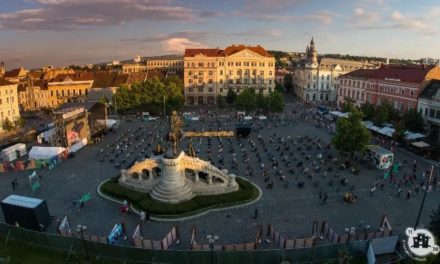Maros County would be classified under Cluj, while the Hungarian-majority Kovászna and Hargita would be included in one administrative unit with Brasov. A similar draft, disadvantageous for Hungarians, was recently leaked in Slovakia.
There are currently 41 counties in Romania, and according to the latest proposal - advocated by the Romanian business and academic sphere - only 15 of these would remain. The administrative units would be reorganized according to the population of small towns and cities.
According to experts, Romania would be able to function much better by reducing the 41 counties in addition to Bucharest. Bogdan Daniel Vișan, president of the Romanian Chamber of Commerce and Industry, believes that a population of at least 5,000 should be taken into account when defining villages, and at least 10,000 for cities.
Marcel Ciolacu, the Social Democratic Prime Minister of Romania, also considers the administrative reform necessary, but noted
this cannot be accomplished overnight.
According to the politician, the reorganization will not take place before the 2024 parliamentary elections.
Although the aforementioned proposal respects the borders of the historical regions in present-day Romania, it takes less into account the cultural, demographic and historical aspects, especially in the Transylvanian counties.
The borders of Transylvania, Partium, Bánát, Havasalföld, Moldavia, and Dobrudja are clearly defined by the new administrative units - although in the case of Máramaros, it can be argued that they would be lumped together with Szatmár and Bihar, which have a significant Hungarian minority -, however, the picture is already mixed in the case of the counties of Transylvania.
There would be no county with a Hungarian majority
For example, the proposal would cut Székelyföld in two. The county of Maros, which has a 38 percent Hungarian population, including the 40-45 percent Hungarians in Marosvásárhely, would be attached to the counties of Cluj, Szilágy and Beszterce, which have a majority Romanian population, while the Hungarian-majority Hargita and Kovászná would be brought together with Brasov.
The latter is particularly problematic because
thus, not only would autonomy not be created, but even a Hungarian-majority county would not remain in Romania.
Hargita county is 85 percent Hungarian, Kovászna county 74 percent, but if they were merged with Brasov, in that case one of the most prosperous counties in Romania would be created, which would be 54 percent Romanian and only 43 percent Hungarian.
Although Maszol mentions that the political parties have been using the public administration reform as a rubber band for years, analysts still believe that there is a chance for it in the coming years. According to Attila Cseke, senator of the Hungarian Democratic Union of Romania (RMDSZ), the reorganization cannot be carried out on the basis of unviable criteria, it is necessary to know the geographical and economic conditions, the traditions of the people living in the settlements, and their ties to the historical regions.
From this point of view, the amalgamation of the three Székely counties (Maros, Hargita, Kovászna) would be self-evident, and Brasso also has many more ties, for example, to Nagy Szeben, which is to be annexed to a separate southwest Transylvanian county according to the proposal, and to the areas of South Transylvania that were once dominated by Saxons.
Reforms are also being planned in Slovakia to the detriment of the Hungarians
They are working on administrative reform not only in our eastern neighbor. In Slovakia, there is a general consensus that the current north-south county system is not viable, but Slovak politicians still do not dare to touch the system developed by Vladimir Mečiar.
The counties were basically formed in such a way that there would be no administrative unit where there is a Hungarian majority. With this, there is more room for maneuver in terms of the distribution of resources, both politically and economically, which often affects Hungarian-inhabited, southern districts.
Among other things, it was also discussed that a proposal had been leaked from the Slovak Ministry of the Interior that would completely reshape county and district-level public administration.
At the same time, the draft is perhaps even more unfavorable for Hungarians than the current system.
Based on this, Somorja, with its nearly 50:50 mixed Hungarian-Slovak population, would be annexed from the Dunaszerdahely district to Bratislava, and the settlements in the northern part of the district would be added to the expanded, Slovak-majority Nagyszombat county, under which Galánta, which currently has a Hungarian-led municipality, would be classified, and the district would disappear completely.
The Hungarian-majority Komárom district would also disappear, which would be annexed almost one-to-one to Érsekújvár, which today has only a 20 percent Hungarian population, but the Hungarian-majority Párkány would come to life as an independent district.
There would still be no county with a Hungarian majority in Slovakia, because the current counties of Nagyszombat and Nyitra would be merged into a large, western Slovakian administrative unit, within which it would be even more difficult for the Hungarians to assert their interests than at present.
Featured image: MTI/Zsolt Szigetváry













